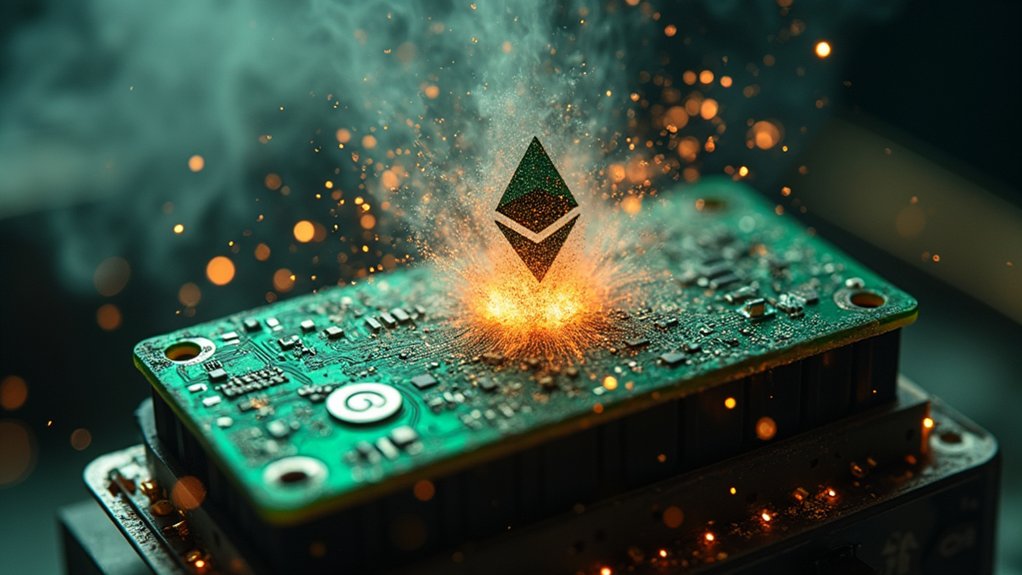While the odds of winning the lottery hover around 1 in 300 million, a solo Bitcoin miner recently defied mathematical probability by successfully mining block 903,883 with hash power representing a mere 0.00026% of the network‘s total computational strength.
The miner’s 2.3 petahash-per-second operation—likely cobbled together from older-generation ASIC rigs—faced daily odds ranging from 1 in 2,800 to 1 in 375,000, depending on network conditions. This translates to roughly a 0.004% chance per day, or statistically speaking, success once every eight years. Yet somehow, against Bitcoin’s current network hash rate of approximately 881.11 exahashes per second, this David managed to slay Goliath.
Against Bitcoin’s crushing 881.11 exahash network dominance, this microscopic 2.3 petahash operation achieved the statistically impossible—David’s computational slingshot found its mark.
The reward proved substantial: 3.173 BTC valued at approximately $350,000 at the time of mining. After paying CKpool’s 2% fee—a reasonable price for infrastructure that eliminates the overhead headaches of truly independent solo mining—the miner netted a windfall that most small-scale operators can only dream about.
CKpool, the non-profit service facilitating this unlikely victory, deserves recognition for democratizing solo mining opportunities. Without such infrastructure, miners operating at this scale would face insurmountable technical barriers, making their already astronomical odds even more prohibitive.
The achievement becomes more remarkable when contextualized against industrial-scale operations. Foundry USA’s mining pool commands 271.7 exahashes per second, making our successful miner’s hash power equivalent to 0.000847% of that behemoth’s computational muscle. It’s rather like watching a pickup truck outrace a Formula 1 car—theoretically possible but practically absurd.
This success story illuminates solo mining’s paradoxical nature: while the probability of success remains infinitesimally small, the potential rewards justify the risk for those willing to play the long game. The mining landscape has become increasingly competitive as Bitcoin’s hash rate increased 46% over the past year, rising from 599.41 EH/s to its current level. Mining profitability depends heavily on electricity costs, hardware efficiency, and market conditions, making this unexpected windfall even more significant for smaller operators.
The miner’s victory serves as both inspiration and cautionary tale, demonstrating that Bitcoin’s decentralized architecture still rewards individual participants, even as institutional players increasingly dominate the landscape.
For smaller miners questioning whether to continue their David-versus-Goliath battle against industrial mining operations, this $350,000 block reward provides a compelling, if statistically misleading, argument for persistence.






